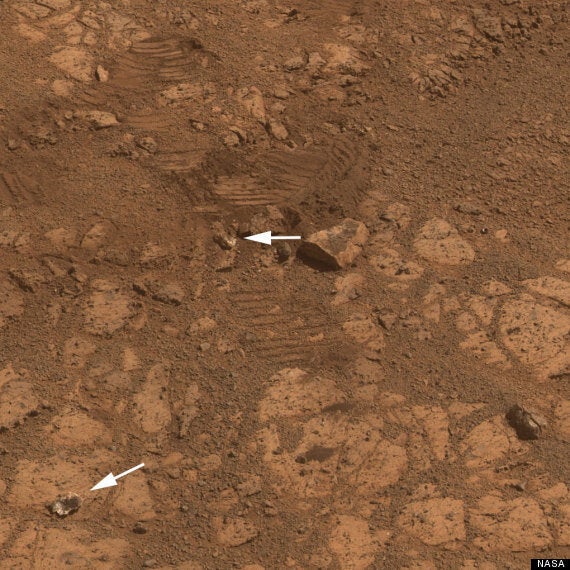Nasa says it has (probably) solved the mystery of how a 'jam doughnut' shaped rock appeared mysteriously in front of one of its robots.
The rock turned up in front of the Opportunity rover on January 8. Comparisons with older photos proved that the rock hadn't been there prior to that date, and no one was sure how it had got there.
The 1.5 inches wide rock - named "Pinnacle Island" - was white on the outside and red in the middle.
"It's like nothing we ever seen before. It's very high in sulfur, very high in magnesium, it has twice as much manganese than anything we've seen on Mars," said the rover's lead scientist Steve Squyres at the time.
Naturally, the mystery caught the public imagination and even resulted in at least one lawsuit instructing Nasa to investigate it for possible evidence of alien life.
But now Nasa has released what it says is proof that the mystery is solved, and no aliens were involved.
It said that Pinnacle Island is a piece of a larger rock which was broken by the wheel of Opportunity in early January.

Above: a Nasa shot of the broken larger rock and the 'jelly donut' piece below.
"Once we moved Opportunity a short distance, after inspecting Pinnacle Island, we could see directly uphill an overturned rock that has the same unusual appearance," said Opportunity Deputy Principal Investigator Ray Arvidson of Washington University in St. Louis. "We drove over it. We can see the track. That's where Pinnacle Island came from."
Which isn't to say the rock isn't interesting. Nasa said the rock shows evidence of very recent erosion by water.
"This may have happened just beneath the surface relatively recently," Arvidson said.
"Or it may have happened deeper below ground longer ago and then, by serendipity, erosion stripped away material above it and made it accessible to our wheels."
Nasa's Mars rovers are currently enduring 'low power' conditions as a result of the Martian winter affecting their solar panels. But it says it hopes to have the rovers back up and running at higher powers soon. Opportunity is currently in its 10th working years on Mars after completing an initial mission lasting 90 days in 2004.